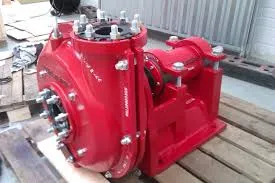English
- Afrikaans
- Albanian
- Amharic
- Arabic
- Armenian
- Azerbaijani
- Basque
- Belarusian
- Bengali
- Bosnian
- Bulgarian
- Catalan
- Cebuano
- Corsican
- Croatian
- Czech
- Danish
- Dutch
- English
- Esperanto
- Estonian
- Finnish
- French
- Frisian
- Galician
- Georgian
- German
- Greek
- Gujarati
- Haitian Creole
- hausa
- hawaiian
- Hebrew
- Hindi
- Miao
- Hungarian
- Icelandic
- igbo
- Indonesian
- irish
- Italian
- Japanese
- Javanese
- Kannada
- kazakh
- Khmer
- Rwandese
- Korean
- Kurdish
- Kyrgyz
- Lao
- Latin
- Latvian
- Lithuanian
- Luxembourgish
- Macedonian
- Malgashi
- Malay
- Malayalam
- Maltese
- Maori
- Marathi
- Mongolian
- Myanmar
- Nepali
- Norwegian
- Norwegian
- Occitan
- Pashto
- Persian
- Polish
- Portuguese
- Punjabi
- Romanian
- Russian
- Samoan
- Scottish Gaelic
- Serbian
- Sesotho
- Shona
- Sindhi
- Sinhala
- Slovak
- Slovenian
- Somali
- Spanish
- Sundanese
- Swahili
- Swedish
- Tagalog
- Tajik
- Tamil
- Tatar
- Telugu
- Thai
- Turkish
- Turkmen
- Ukrainian
- Urdu
- Uighur
- Uzbek
- Vietnamese
- Welsh
- Bantu
- Yiddish
- Yoruba
- Zulu
Telephone: +86 13120555503
Email: frank@cypump.com
Dec . 01, 2024 18:55 Back to list
Optimizing Suction Piping Design for Efficient Slurry Pump Performance
Understanding Slurry Pump Suction Piping
Slurry pumps are essential in various industries, particularly in mining, construction, and wastewater treatment, where they transport mixtures of solids and liquids. One crucial aspect of slurry pump operation is the design and maintenance of the suction piping. Properly designed suction piping ensures efficient pump operation, minimizes wear and tear, and prevents operational failures. This article explores the significance of slurry pump suction piping, its design considerations, and maintenance practices.
Importance of Suction Piping
The suction piping of a slurry pump plays a vital role in the overall efficiency and longevity of the pumping system. Slurry pumps are designed to handle abrasive and viscous materials, which can lead to challenges such as blockages, cavitation, and excessive wear if not managed properly. The design of the suction pipeline directly affects the pump’s performance by influencing the hydraulic conditions under which the pump operates.
Design Considerations
When designing suction piping for slurry pumps, several critical factors must be taken into account
1. Pipe Material The choice of material for suction piping is crucial. It should be resistant to abrasion and corrosion, especially when dealing with abrasive slurries containing hard particles. Common materials include rubber-lined steel, stainless steel, and various polymers designed for wear resistance.
2. Diameter and Length The diameter of the suction pipe must be adequate to accommodate the flow rate without causing excessive pressure drops. A larger diameter reduces friction losses, while the length of the pipe should be minimized to enhance efficiency. However, the diameter should not be so large that it allows the slurry to settle, potentially causing blockages.
3. Slope and Elevation Properly sloping the suction pipe is essential to ensure that the slurry remains in motion and does not settle. A slight angle can help promote flow while preventing the buildup of solids. Additionally, minimizing elevation changes in the piping can reduce the energy required to draw the slurry into the pump.
4. Bends and Fittings Each bend or fitting in the suction piping adds resistance and can result in pressure losses. The use of smooth, gradual bends rather than abrupt changes can help maintain flow efficiency. Additionally, strategically placing flanges and valves can facilitate maintenance and operation.
slurry pump suction piping

5. Suction Strainer Installing a suction strainer can help prevent large particles from entering the pump, which can cause damage or performance issues. However, it is crucial to ensure the strainer's mesh size is appropriate for the specific slurry characteristics and to frequently check and clean it to avoid blockages.
Maintenance Practices
Regular maintenance of the suction piping is essential to ensure that the slurry pump operates efficiently and safely. Key maintenance practices include
- Routine Inspections Regularly inspect the piping for signs of wear, leaks, or blockages. This includes checking for erosion in high-wear areas and ensuring that joints and fittings are secure.
- Cleaning Keep the suction piping clean to prevent buildup that can lead to clogs. Schedule cleaning during routine maintenance to minimize downtime.
- Monitoring Performance Keep an eye on the pump's performance indicators, such as flow rate and pressure. Any deviations from normal operating conditions may indicate issues within the suction piping that need investigation.
- Scheduled Replacements Plan for the eventual replacement of piping components that are subject to wear. Having a proactive approach to maintenance can save costs and downtime in the long run.
Conclusion
In conclusion, slurry pump suction piping is a critical component that affects the performance and longevity of the pumping system. By considering factors like material selection, pipe diameter, slope, and bends during the design phase, and following through with regular maintenance, operators can ensure efficient and reliable operation of their slurry pumps. Understanding these principles is vital for any industry relying on slurry transportation, ultimately leading to improvements in productivity and cost-effectiveness.
-
ISG Series Vertical Pipeline Pump - Chi Yuan Pumps Co., LTD.|Advanced Hydraulic Design&Energy-Efficient Solutions
NewsJul.30,2025
-
ISG Series Vertical Pipeline Pump - Chi Yuan Pumps Co., LTD.
NewsJul.30,2025
-
ISG Series Vertical Pipeline Pump - Chi Yuan Pumps Co., LTD.|energy-efficient fluid handling&industrial durability
NewsJul.30,2025
-
ISG Series Vertical Pipeline Pump - Chi Yuan Pumps | Advanced Engineering&Industrial Efficiency
NewsJul.30,2025
-
ISG Series Pipeline Pump - Chi Yuan Pumps | High Efficiency, Energy Saving
NewsJul.30,2025
-
ISG Series Vertical Pipeline Pump-Chi Yuan Pumps|High Efficiency&Reliable Performance
NewsJul.29,2025










